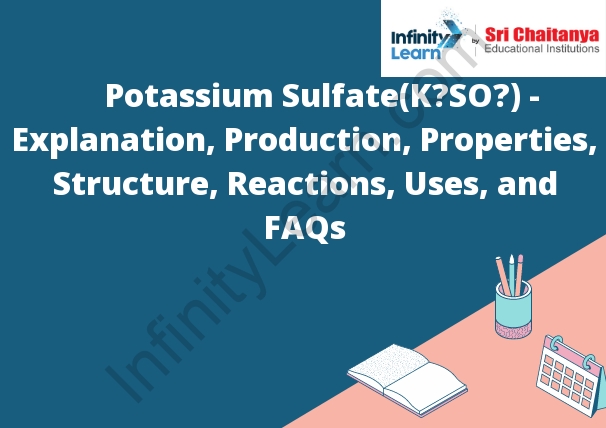Table of Contents
What is Potassium Sulfate? ; Properties of Potassium Sulfate K2SO4 ; Reactions of Potassium Sulfate ;
Uses of Potassium Sulfate
Potassium sulfate is a salt with the formula K2SO4. It is a white solid that is soluble in water. Potassium sulfate is produced by the reaction of potassium chloride and sulfuric acid.
Potassium sulfate has a number of uses. It is used as a fertilizer, as a herbicide, and as a desiccant. It is also used in the production of potassium nitrate and potassium carbonate.

production’>Production of Potassium Sulfate
Potassium sulfate is produced by the reaction of sulfuric acid and potassium hydroxide. The sulfuric acid is added to the potassium hydroxide to produce potassium sulfate and water.
Potassium Sulfate Structure K2SO4
Potassium sulfate is a salt composed of potassium and sulfur. The potassium ions are arranged in a cubic closest-packed structure, and the sulfate ions are arranged in an octahedral structure.
Production of Potassium Sulfate
Potassium sulfate is produced by the reaction of potassium chloride and sulfuric acid. The potassium chloride is dissolved in water and the sulfuric acid is added gradually. The reaction produces potassium sulfate and hydrogen chloride. The potassium sulfate is separated from the hydrogen chloride and the hydrogen chloride is recycled.
Acidification
The ocean is becoming more acidic as it absorbs carbon dioxide from the atmosphere. This process, known as ocean acidification, is making it harder for marine life to form shells and skeletons.
The absorption of carbon dioxide into the ocean causes two things to happen. The first is that the pH of the ocean decreases. The pH is a measure of how acidic or alkaline a substance is, and a lower pH means that the ocean is more acidic. The second thing that happens is that the ocean becomes more alkaline. This is because carbon dioxide reacts with water to form carbonic acid.
The decrease in pH makes it more difficult for marine life to form shells and skeletons. This is because the acid interferes with the process of calcification, which is when marine life uses calcium to form shells and skeletons. The increase in alkalinity makes it more difficult for marine life to absorb carbon dioxide from the water.
The effects of ocean acidification are already being felt by marine life. Some marine life, such as corals and clams, are being damaged by the increase in acidity. It is estimated that by the end of the century, the ocean will be 30% more acidic than it is today. This will have a devastating impact on marine life and the food chain.
K2SO4 Uses
Sulfuric acid is a mineral acid that is made up of sulfur, oxygen, and hydrogen. It is a colorless to slightly yellow liquid that is very corrosive. It has a density of 1.84 grams per cubic centimeter and a boiling point of 338 degrees Celsius. It is used in a number of different industries, including the production of fertilizer, explosives, and detergents. It can also be used to clean metal surfaces, to make sulfuric acid based batteries, and to produce sulfur dioxide, which is used in the production of sulfuric acid.








